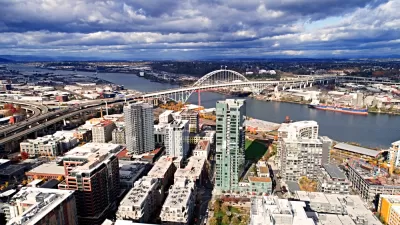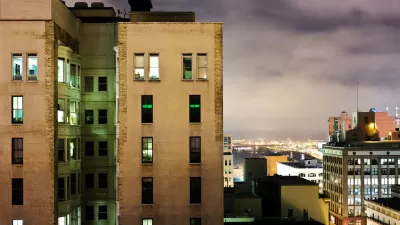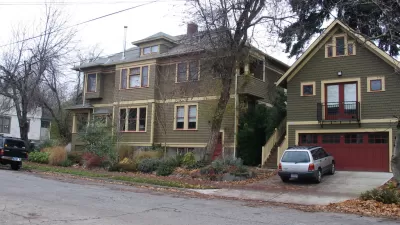A deep dive into what a Portland rent check pays for sheds light on strategies to help lower rising rents.

Michael Andersen recently crunched some numbers to answer two questions. First, if we take a hypothetical rent check from a Portland apartment and follow the money, what is the breakdown? And second, what does that tell us about ways to bring down rental costs in a city where more and more people are struggling to find affordable housing?
For the first part of his exercise, Andersen identified 11 factors that influence the cost of rent – everything from marketing and parking subsidies to property taxes and property management costs. He found that by far the largest chunk of a rent check went to housing materials and construction costs:
I assumed $194 per square foot of living space for work done in 2016 and 2017. It came to about 34 percent of project costs, the biggest single share of today’s rent check – and also the driving force behind most of the other factors, from architects’ fees to bank loans. For every $1 that hard costs rise or fall, total project costs rise or fall $1.31.
He then used this insight to take a closer look at nine ways rental prices could be brought down, some of which he acknowledges are less realistic than others. For example, Andersen suggests reducing public services (lowering the average rent by $85 a month) and making small apartments legal again ($158 a month).
In the end, he points to $832 of potential savings. All this, says Andersen, assumes that developers will pass on these savings to renters, which in the short-term they may not be inclined to do. However, the effect over time is also important: lower costs encourage overbuilding, which then drives down the price of housing.
Andersen says that lower-income residents are not going to be able to afford even the cheaper rent he is proposing, and more affordable units in older buildings are where they will end up. But, rents in newer buildings directly affect rents in older ones and so, argues Andersen, dealing with the cost of new buildings creates an important ripple effect throughout the housing market.
FULL STORY: What Makes Portland's New Apartments So Expensive?

Alabama: Trump Terminates Settlements for Black Communities Harmed By Raw Sewage
Trump deemed the landmark civil rights agreement “illegal DEI and environmental justice policy.”

Planetizen Federal Action Tracker
A weekly monitor of how Trump’s orders and actions are impacting planners and planning in America.

The 120 Year Old Tiny Home Villages That Sheltered San Francisco’s Earthquake Refugees
More than a century ago, San Francisco mobilized to house thousands of residents displaced by the 1906 earthquake. Could their strategy offer a model for the present?

Opinion: California’s SB 79 Would Improve Housing Affordability and Transit Access
A proposed bill would legalize transit-oriented development statewide.

Record Temperatures Prompt Push for Environmental Justice Bills
Nevada legislators are proposing laws that would mandate heat mitigation measures to protect residents from the impacts of extreme heat.

Downtown Pittsburgh Set to Gain 1,300 New Housing Units
Pittsburgh’s office buildings, many of which date back to the early 20th century, are prime candidates for conversion to housing.
Urban Design for Planners 1: Software Tools
This six-course series explores essential urban design concepts using open source software and equips planners with the tools they need to participate fully in the urban design process.
Planning for Universal Design
Learn the tools for implementing Universal Design in planning regulations.
Clanton & Associates, Inc.
Jessamine County Fiscal Court
Institute for Housing and Urban Development Studies (IHS)
City of Grandview
Harvard GSD Executive Education
Toledo-Lucas County Plan Commissions
Salt Lake City
NYU Wagner Graduate School of Public Service





























